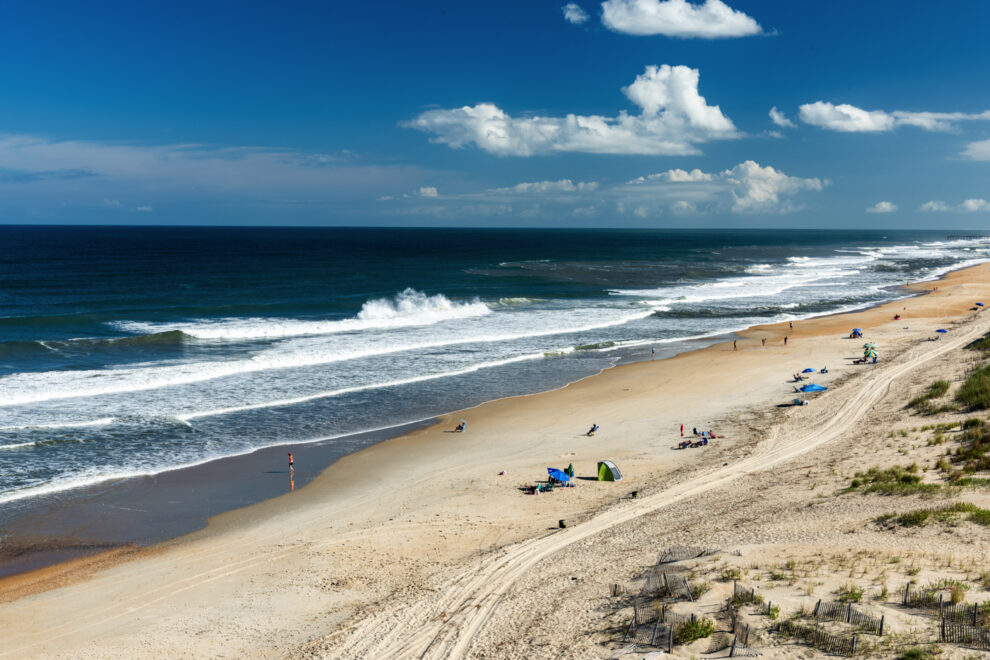The Carteret County Beach Commission, which advises County Shore Protection Office Manager Ryan Davenport, Monday afternoon began discussions about what could – or could not – become a problem: the $30 million state cap on how much the county can accumulate in its beach nourishment reserve fund.
Uncertainty is the issue.
The board, which held its regular monthly session in the Emerald Isle Board of Commissioners’ meeting room, took no action but discussed options, according to Davenport.
The nourishment fund gets 50 percent of the county’s 6 percent tax on accommodations – hotels, motels, condominiums, cottages, etc. – with the rest of that revenue going to the tourism development authority to promote visitation.
Davenport said that at the end of last August, the last official tally, the beach fund stood at about $21 million, but millions of dollars have flowed into the fund since then, adding to a treasure chest that boomed during the COVID-19 pandemic as tourism increased, in part because many vacationers stayed closer to home.
Although the huge month-over-month increases in revenue have slowed since the impact of COVID lessened, tourism is still booming. For example, in April 2023, before the traditional beginning of tourism season, room tax revenue to the beach fund approached $1 million. June is usually a $2 million-plus month, July last year topped $3 million and August in recent years has become a $2 million month. Even winter months in recent years have broken past records.
When the county issues its next total on the beach nourishment fund at the end of this August, Davenport said he believes it will be $26 to $27 million.
The ideal solution would be to have the state General Assembly increase the cap, as it did, from $10 million to $30 million in 2013.
After all, Davenport said, $30 million isn’t really that much of a reserve when you’re talking about beach nourishment projects that cost multiple millions of dollars each. Between 2019 and 2021, after Hurricane Florence in September 2018 removed millions of cubic yards of sand from Bogue Banks, the county spent close to $85 million on a three-phase nourishment project that put millions of cubic yards back, from Atlantic Beach through Emerald Isle.
The Federal Emergency Management Agency eventually reimbursed much of that money.
“FEMA was very good to us,” Davenport said.
But who knows how generous FEMA might be in the future? Priorities in the federal government can change fast. And the Bogue Banks beaches are the engine that drives the county’s economy.
“We think we might have a year or two before we hit that ($30 million) cap,” Davenport said. “But who knows? We could have a Category 5 Hurricane this year that rips Bogue Banks apart.”
The county certainly does not want to go out and spend money on projects that aren’t really needed just to lower the amount in the reserve fund, Davenport said. If there are needed and useful projects, that’s another thing.
But as things sit now, there are only two dredging/nourishment projects on the table, both this winter and both relatively small. One is at Homer’s Point in Indian Beach, with sand dredged there set to go on an erosion hot spot near a free-parking county beach access facility in that town. The other is a Bogue Inlet dredging project, with the sand to be placed on the strand in western Emerald Isle.
Combined, those probably will probably cost the county less than half a million dollars – grants will help pay the cost – so those won’t significantly reduce the reserve fund.
So the county has what is a problem with the cap, albeit a good problem.
Basically, Davenport said, the beach commission Monday just “talked about options” on how to approach the legislature.
Source: Carolina Coast Online



























